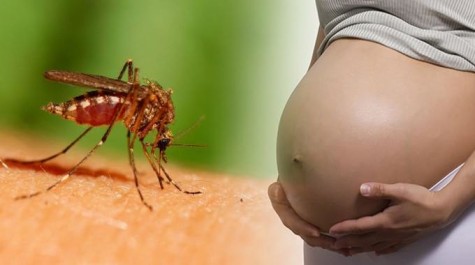A New Epidemic
March 29, 2016
The Zika Virus is a virus spread to people primarily through an infected aedes species mosquito. This virus was first discovered in 1947 and is named after the Zika forest in Uganda. First human cases were reported in 1952, in Tropical Africa, Southeast Asia, and the Pacific Islands. As this disease’s symptoms are similar to those of others, many cases haven’t been recognized or even reported to be dangerous. In May 2015, the first confirmed Zika Virus was reported by the Pan American Health Organization (PAHO) in Brazil. On February 1, 2016, the World Health Organization (WHO) declared the virus as a Public Health Emergency of International Concern (PHEIC) and were informed that the transmission was reported in different countries and territories, likely continuing to spread in new areas.
Most people infected with the Zika Virus won’t show any signs or symptoms of illness, but the most common symptoms of this disease are fever, joint pain, conjunctivitis (pink eye), muscle pain, and headaches. These symptoms will more likely show within a few days or week of the infection. Studies have shown that it is very rare to die from the Zika Virus, and that most people don’t get sick enough to report it to a hospital. They also believe that once a person is infected, he/she is likely to be protected from future infections. In October 2013, French Polynesia reported an outbreak that is believe to affect 11% of its population, but the limited laboratory capacity left a number of unidentified cases.
Evidence showed that infections with the Zika Virus during pregnancy can stop the baby’s brain from forming or growing normally, causing microcephaly (small head), stiffness, and problems with learning and development throughout it’s lifetime. Studies have been recently implemented to increase the understanding of this virus and it’s effects on unborn babies during pregnancy, in the womb, and later in life. Brazil experienced a dangerous outbreak. About 150 cases of microcephaly are usually reported from three million babies born each year, but the number recently escalated to approximately 4,000 cases.
“Can the Zika Virus be sexually transmitted?” Although three cases have been reported in the past few years, it has not yet been confirmed, and most experts still believe that the virus is transmitted by mosquitoes. In 2008, a scientist studying Malaria in Africa returned to Colorado and infected his wife with what turned out to be the Zika virus, before showing symptoms himself. In 2013, a 44-year-old Tahitian man tested positive for a live virus in the semen. Studies later showed that both men had infected prostates. The C.D.C. soon issued new guidelines to prevent more spread of the disease, especially with pregnant women.
As some believe the virus is mostly found in South America (Brazil, Mexico, Tahiti…), several cases were reported in North America (Texas, Colorado, Massachusetts…). The Boston Public Health officials have confirmed the first case of Zika virus, as they believe the patient was infected in an area outside the U.S. where the epidemic is ongoing; although the case remained partially unclear to the public.
Sarah Latimer, a Science teacher at Ipswich High School, gave a thorough explanation of how the virus is spread and the method used by experts to test the patient for infection of the disease. “The Zika Virus cannot make copies of itself, so it latches on to our ribosomes in our cells using reserve transcriptase. When our cell die, these reserve Transcriptase or RT spread. So when our test turns out to be positive with RT, we are infected with the Zika Virus.” She explained, “Viruses have protein codes that we can recognize the first time we get infected with any type of virus, so our body starts making anti-bodies against the virus and destroy it.” She continued explaining that we need more data to prove what this virus is capable of. She also said that the latest studies show that a woman can get pregnant after a while without worrying about infecting the baby.
our cells using reserve transcriptase. When our cell die, these reserve Transcriptase or RT spread. So when our test turns out to be positive with RT, we are infected with the Zika Virus.” She explained, “Viruses have protein codes that we can recognize the first time we get infected with any type of virus, so our body starts making anti-bodies against the virus and destroy it.” She continued explaining that we need more data to prove what this virus is capable of. She also said that the latest studies show that a woman can get pregnant after a while without worrying about infecting the baby.
